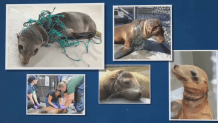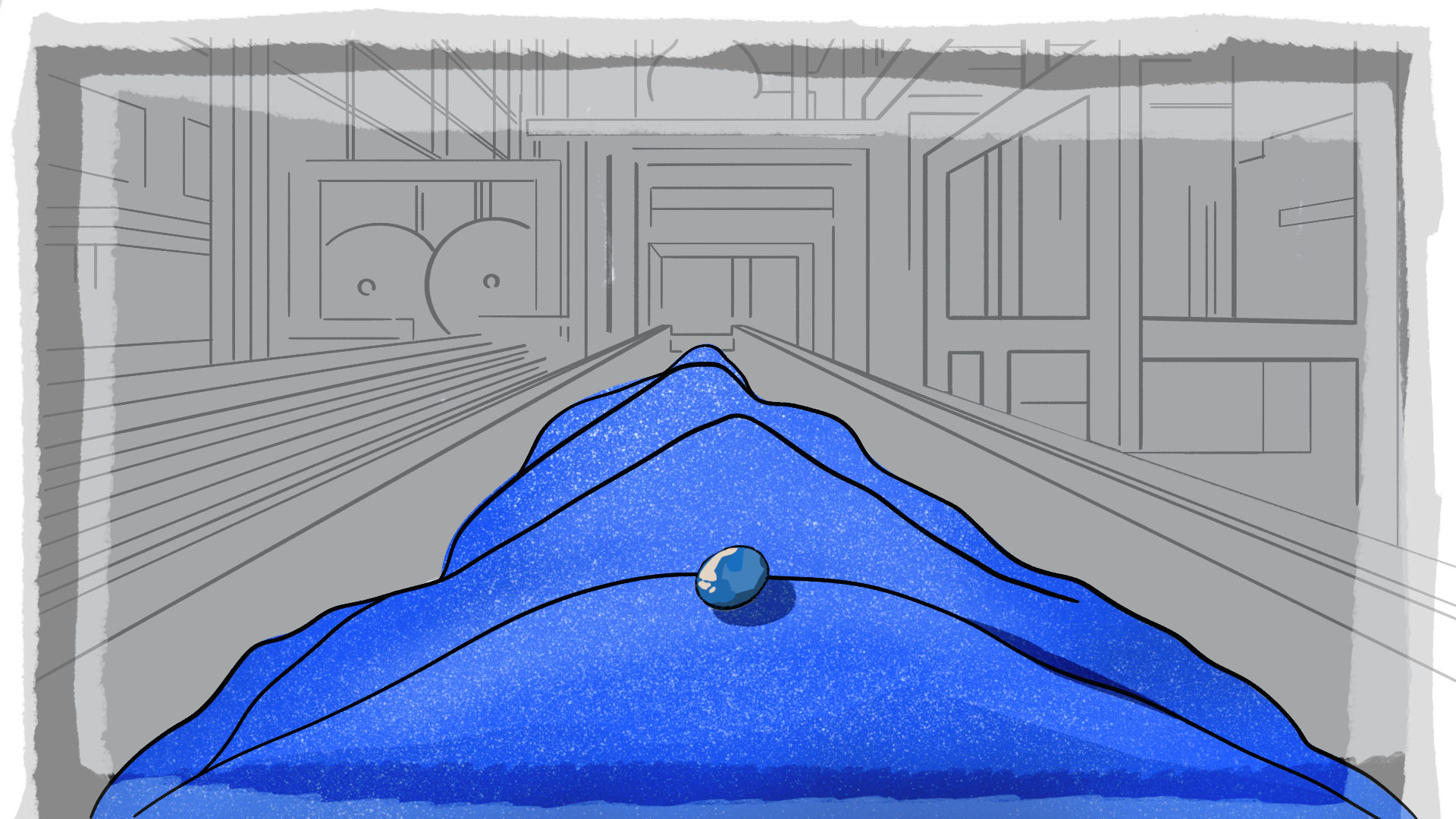By 2050, the world is expected to generate more than enough plastic pollution to cover the entire island of Manhattan with a two-mile high mountain of plastic trash. The rise in plastic waste, including microscopic plastic floating in our oceans, is pushing more than 160 nations to develop a global plan to “end plastic pollution.” The NBC Bay Area Investigative Unit dives into what’s at stake for vulnerable wildlife and your dinner plate.
Leaders from around the world have gathered in Busan, South Korea this week in hopes of finally striking a global treaty to reduce the world’s growing level of plastic pollution. Negotiations began more than two years ago, when 167 member countries of the United Nations voted to develop a legally binding agreement, by the end of this year, to “end plastic pollution.”
“This is not a problem that we can solve city by city, county by county, country by country – that's effectively what we're trying to do right now and it's not working,” said ecologist Dr. Douglas McCauley, who has spent the past decade studying the impacts of plastic pollution.
“We actually need a set of policies that reframe the way that we're doing business as a planet with plastic.”

McCauley and his team of researchers at UC Berkeley and UC Santa Barbara created an online, interactive tool using historical data and artificial intelligence to predict how certain policies can help shrink the world’s growing pile of plastic.
They’ve met with roughly 30 nations to explain how a few global changes could reduce plastic waste by more than 90 percent over the next 25 years.
“The most exciting finding from this work was that it is actually possible,” McCauley said. “In fact, we see multiple pathways to ending plastic pollution.”
Their interactive tool allows users to select up to 11 different policy changes to see how their individual and collective impact will affect future pollution levels around the world. Researchers believe four specific policies would be enough to nearly eliminate plastic waste by 2050. Those reforms include capping the amount of plastic produced globally, instituting a new tax on products packaged in plastic, requiring new plastic products be made with at least 40 percent of recycled materials, and creating a $50 billion global fund to improve and expand waste collection, incineration, and landfilling facilities.
“We need some uniform policies and laws,” said McCauley. “It's not too late, but we have to do it now.”
UN proposals promise to dramatically reduce plastic waste by 2050
To get a sense of how much plastic pollution is expected across the globe in a single year, enter your address below and see just how far the swath of waste would stretch if it were piled one foot high across your own part of the world.
Graphic by: Annetta Stogniew
Source: Benioff Ocean Science Laboratory
The Plastics Industry Association, which represents manufacturers, suppliers, and recycling companies, says it shares the goal of creating an “ambitious global plastics pollution agreement,” but has concerns about the global treaty and it’s “misguided support of plastic production caps.”
In a statement, the association’s CEO and President Matt Seaholm, said such reforms “would harm U.S. manufacturers without reaching our shared sustainability goals. He added, “as an industry, we remain committed to collaborating with all levels of government to combat plastic waste.”
Plastic production largely took off in the 1950s and is credited with creating life-saving medical devices and safe food packaging.
Plastic’s durability, however, has led to an increasing amount of pollution.

A single plastic bottle can take up to 450 years to decompose, according to the World Wide Fund for Nature (WWF).
In fact, it’s estimated most of the plastic ever made around the world still exists. The effects on wildlife have been devastating with plastic entangling and injuring birds, turtles, and even threatened and endangered whales.
About 11 million metric tons of plastic waste find their way into our oceans each year, according to a recent study from Pew – that’s enough trash to fill more than half a million dump trucks and the flow of plastic is expected to triple by 2040.
Lurking in our oceans, however, is arguably an even bigger threat than all the piles of plastic we can see. Scientists believe a seemingly endless supply of microscopic plastic continue to pose serious dangers to wildlife and humans.

On the coast of Sausalito, the Marine Mammal Center regularly rehabilitates injured animals, including those entangled in plastic nets and fishing lines. The center has admitted more than 20,000 patients over the past few decades.
Almost every day we see direct impacts of plastic.
Dr. Cara Field, medical director at the Marine Mammal Center
"Almost every day we see direct impacts of of plastic, most commonly in the form of entanglement in sea lions and seals and some of the other patients that we see," said Dr. Cara Field, who serves as the center's medical director.
"When they get stuck in it, it literally can be anywhere from just around their mouth, around their head, around their neck and can cause immediate drowning, if it gets to a point where they can't get out of a net."

So how exactly is plastic made? Keep scrolling to find out

“The vast majority of microplastics do come from breaking down of larger plastic, whether it's a plastic bag or a plastic bottle, they just get weathered and fragmented into smaller and smaller pieces,” said Margaret Spring, Chief Conservation and Science Office at the Monterey Bay Aquarium, where researchers have been diving into the impacts of microplastics.

Spring’s team partnered with scientists at the Monterey Bay Aquarium Research Institute (MBARI) to operate a small, remote-controlled sub and sample more than 26,000 liters of sea water off the Monterey Coast, all in an effort to search for the prevalence of plastic.
“What we found at every depth was that microplastics were in the water column,” Spring said. "Everywhere from surface to bottom.”
What we found at every depth was that microplastics were in the water column.
Margaret Spring, Chief Conservation and Science Officer for the Monterey Bay Aquarium

That includes depths as far down as 1,000 meters, where light cannot even reach. In those dark corners of the ocean, floating microplastics look almost identical to tiny specks of protein called ‘marine snow,’ that sea life rely on for food. Thus, the plastic gets eaten up, too, wreaking havoc in our oceans and eventually our own bodies. Plastic has been found in human blood, breast milk, and even our brains. The long-term affects in humans and wildlife are still unclear, but plastic continues to be part of our diet.
One in four fish sold in markets in California and Indonesia contained plastic or other human-made debris, according to researchers at UC Davis.
To explain the threat to children, the Montrey Bay Aquarium set up a giant arcade game, where players take on the role of sea creatures as they try to avoid eating microplastics. The game, however, is impossible to beat.
“There’s plastic everywhere,” Spring said. “I don't think we're winning, but we are learning."

The aquarium is also partnering with scientists at Stanford to test river water, beach sand, and even whale feces for microscopic signs of broken-down plastic. While research regarding the scale and impact of plastics is ongoing, Spring says the world cannot afford to wait any longer before enacting lasting solutions.
Nations from around the world are currently meeting in South Korea, where they are expected to soon unveil a final version their plan to dramatically reduce the world's growing pile of plastic pollution.
"What you're seeing is the fastest moving global treaty I think anyone has ever seen," she said. "Now all the governments are starting to come together because no one government can do it alone.
The United Nations is slated to finalize the global plastics treaty by Sunday, but member countries aren't likely to cast their official vote on the plan until early next year.
"I have a lot of hope," said Spring. "We've created this problem as a society and we can undo it.”
Contact The Investigative Unit
submit tips | 1-888-996-TIPS | e-mail Bigad


